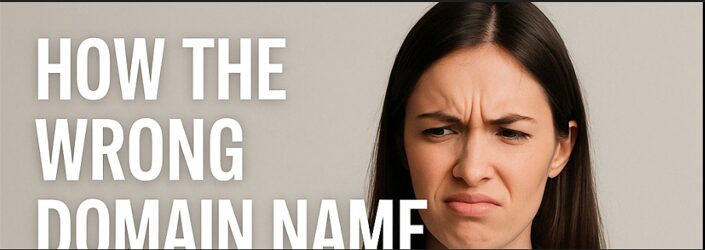In a digital world where consumers judge businesses in seconds, your domain name is often your first — and most powerful — trust signal. Whether you’re a startup launching a new product or a legacy brand expanding online, the name that sits at the top of your browser tab plays a bigger role in perception than most realize.
In fact, your domain name can be the invisible dealbreaker. It’s that split-second first impression that either invites people in — or quietly pushes them away. It’s often the difference between a click and a scroll-past, a sale and an abandoned cart.
The Subtle Psychology of Domain Names
Think about it: would you feel confident entering your credit card details on a site like ‘cheap-deals-4u.biz’? Or would you trust a URL that looks more like a typo than a real brand name?
Unintentionally, many businesses sabotage their own credibility by choosing domains that seem spammy, confusing, or overly long.
Consumers have been trained by years of scams, phishing sites, and sketchy popups to spot “off” domains — and avoid them. That first moment of hesitation can lead to lost clicks, lower conversion rates, and even long-term damage to brand reputation.
There’s a subconscious element to it as well. Clean, simple domain names suggest professionalism, reliability, and attention to detail — while awkward or overly creative ones raise questions. Questions that no brand wants asked.
Real-World Branding Mistakes
We’ve seen brands that put years into building a beautiful website and marketing campaign, only to discover their domain name confuses customers or redirects traffic to a competitor with a better, simpler name.
In one case, a promising startup had their ideal .com taken and settled for an obscure country-code domain. They later discovered users were typing in the .com by default and ending up on a parked page — or worse, a competitor’s landing page. Not only were they losing traffic, they were hemorrhaging trust.
And it’s not just about aesthetics — it’s about memorability and type-in traffic.
If your customers can’t remember your domain, they’re far less likely to return.
You want a name that rolls off the tongue, sticks in the mind, and feels trustworthy when it appears in search results, social feeds, or inboxes.
The Strategic Approach
Securing a clean, brand-aligned domain is no longer optional — it’s a strategic necessity. That includes:
- Avoiding unnecessary hyphens, numbers, or odd extensions
- Matching your brand name as closely as possible
- Investing in the .com version if it’s available
- Being mindful of how the name looks in search results and social previews
- Thinking ahead — can this domain grow with you, or will it feel small in a year?
Too many entrepreneurs treat their domain name as an afterthought, only to realize later that it’s the foundation of their online identity.
A strong domain doesn’t just help SEO or branding — it makes every customer interaction smoother and more trustworthy.
Expert Insight
At NamesDigest.com, we’ve analyzed hundreds of branding failures caused by poor domain name decisions. Our research-backed content helps founders, marketers, and growth teams understand how to choose domains that build instant trust — not raise red flags.
We believe domain strategy should be part of the brand strategy from day one — not a fire you scramble to fix later. Through interviews, case studies, and practical guides, we shine a light on the silent mistakes that hold businesses back from building real digital credibility.
Final Thoughts
A well-chosen domain name isn’t just a URL — it’s a digital handshake, a silent ambassador, and often, your customer’s very first impression of who you are.
Make it count.
Because if your domain makes people pause, wonder, or worry — you’re already losing them.
Author: Sam Quino
Founder, NamesDigest.com



































